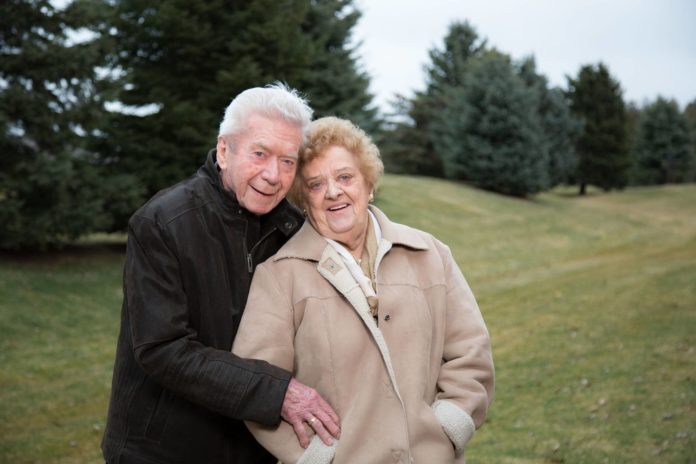For 86-year-old Ulla Jensen, it’s “great peace of mind”. For her 91-year-old husband of 67 years, Otto, it’s the hours not spent travelling to or in a doctor’s waiting room. “It’s the best thing that ever happened,” he says.
For nearly 9,000 Ontario patients with chronic conditions, Telehomecare health coaching and remote monitoring has reduced hospital stays and emergency room visits by more than 50 per cent as well as reduced unnecessary visits to their primary care provider by more than 45 per cent.
Developed and overseen by the Ontario Telemedicine Network (OTN), Telehomecare is funded by the Ministry of Health and Long-Term Care and Canada Health Infoway and is a program of Ontario Local Health Integration Networks (LHINs) in most of Ontario, delivered through hospitals or Community Care Access Centres. Information about where it’s available can be found at OntarioTelehomecare.ca.
Otto and Ulla aren’t alone in their enthusiasm for Telehomecare. A recently completed survey of patients found that more than 94 per cent of patients felt Telehomecare improved their ability to self-manage their condition and 88 per cent said it improved their quality of life.
The program puts easy-to-use monitoring equipment into the homes of patients who check their vital signs daily. Results are monitored remotely by specially-trained clinicians who watch for signals that the patient’s condition is worsening. Patients also answer a few questions on a computer tablet about how they are feeling. More importantly, the clinician provides education and coaching which teaches patients how their lifestyle habits – food, sleep, exercise – affect their health.
 The OTN Telehomecare patient experience survey found that 95 per cent found the technology easy to use and 99 per cent were satisfied with the quality of care and coaching they received.
The OTN Telehomecare patient experience survey found that 95 per cent found the technology easy to use and 99 per cent were satisfied with the quality of care and coaching they received.
“The right care in the right place at the right time is the mantra – and the mission – of a health care system transforming itself to meet the needs of an aging population,” says Dr. Ed Brown, CEO of OTN. “Telehomecare is a perfect example of that value in practice.
“More than 90 per cent of people want to stay in their own home – age in place — if they can,” Dr. Brown says, “but changes in health could necessitate a move. For example, more than 80 per cent of Ontarians over the age of 45 have at least one chronic condition. We know that chronic conditions, if not closely managed, may worsen, leading to emergency room visits and hospital stays. Telemedicine – remote monitoring like Telehomecare – is one of the easiest and most practical ways to ensure people have the best possible quality of life and are able to remain at home.”
That quality of life improvement extends to volunteer caregivers like Ulla Jensen. According to the Change Foundation, 29 per cent of the provincial population – or 3.3 million people – provide some form of support, assistance, care or enrichment to a family member or friend. Telehomecare saves family caregivers nearly 10 hours a month of travel time according the recent survey, roughly equivalent to the travel time patients saved. It also provides that “great peace of mind” that Ulla talks about.
“I feel more secure staying in my home alone now that I have this service. I am very grateful for it,” one patient wrote in the recent Telehomecare survey.
A caregiver responded that “the service gave my mother the opportunity to recover in the comfort of her home. This was a major contributor to her recovery. It was also a great relief and support for caregivers to help recognize and control potential crisis/anxiety in this serious condition. It gave us hope that my mother would survive her illness (and we) realized this result. Always received quality advice and speedy assistance!! Thank you!!!”
As for Otto and Ulla, Telehomecare made such a difference in their lives that they were able to travel to Copenhagen last spring to visit family in the city where they met nearly seven decades ago.


